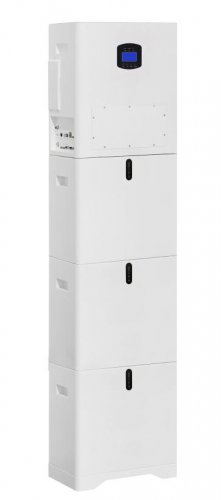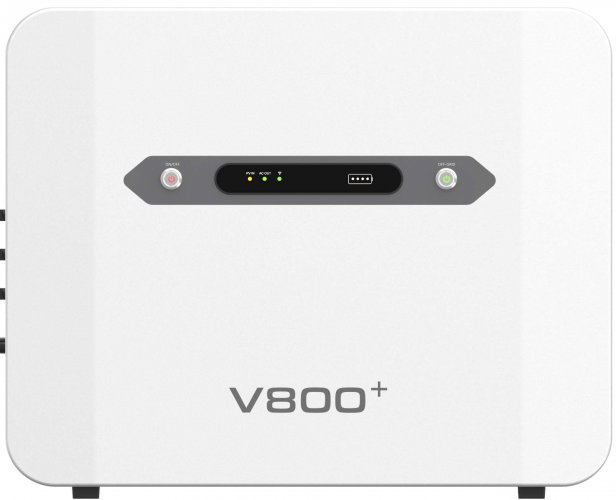Battery Safety Improvements News: Solid-state Advancements And Ai-driven Management Systems Lead Industry Efforts
The global push towards electrification, spanning consumer electronics, electric vehicles (EVs), and grid-scale energy storage, has placed unprecedented focus on the fundamental component enabling this transition: the battery. Consequently, battery safety improvements have evolved from a niche engineering concern into a critical industry-wide imperative. Recent developments indicate a significant shift beyond incremental enhancements to existing lithium-ion technology toward more fundamental architectural changes, complemented by sophisticated software and monitoring solutions.
Latest Industry Developments: From Lab to Factory
A wave of recent announcements from leading battery manufacturers and automotive OEMs underscores the accelerating pace of change. QuantumScape, a prominent developer of solid-state batteries, recently released further third-party test data indicating its anode-less cell design can withstand hundreds of charging cycles without forming dangerous lithium dendrites—a primary cause of internal short circuits and thermal runaway in conventional cells. Similarly, Toyota has publicly reaffirmed its commitment to commercializing solid-state batteries by 2027-2028, highlighting their superior safety profile due to the use of a solid electrolyte, which is non-flammable compared to the liquid electrolytes in standard batteries.
Beyond next-generation chemistry, improvements in Battery Management Systems (BMS) represent a critical area of innovation. Companies like Tesla and GM are integrating more advanced, AI-powered BMS that operate in real-time. These systems no longer merely track voltage and temperature; they use predictive algorithms to analyze historical and real-time data to identify subtle anomalies that precede failure. For instance, a slight irregularity in the voltage curve during charging could trigger a preventative protocol, isolating a single cell module before a problem cascades.
Furthermore, the manufacturing process itself is receiving heightened scrutiny. CATL, the world's largest battery producer, has pioneered cell-to-pack (CTP) technology, which reduces the number of components and connectors. This simplification not only increases energy density but also reduces potential failure points. Their latest iteration integrates advanced fire-retardant materials and heat dissipation channels directly into the pack's structure, creating a passive safety system that can contain a thermal event.
Trend Analysis: The Convergence of Chemistry, Engineering, and AI
The trends in battery safety are converging into a multi-layered strategy:
1. The Solid-State Horizon: The transition to solid-state batteries is arguably the most anticipated safety improvement. By eliminating the volatile liquid electrolyte, these batteries fundamentally remove the primary fuel for fires. While manufacturing scalability remains a challenge, the industry is betting heavily on this technology as the ultimate long-term safety solution. The trend is not just about lab breakthroughs but about building the supply chain and production lines to make these cells a commercial reality.
2. Software as a Safety Shield: As physical improvements to chemistry approach material limits, software is becoming the dynamic layer of protection. The integration of Artificial Intelligence and Machine Learning (AI/ML) into BMS marks a paradigm shift from reactive to predictive safety. These systems continuously learn, potentially identifying failure patterns invisible to traditional monitoring. This trend points toward a future where a battery’s digital twin—a virtual simulation—is used to predict its behavior and lifespan under countless scenarios, preventing safety issues before they occur.
3. Enhanced Recycling and Second-Life Protocols: Safety concerns extend beyond a battery's first life. As millions of EV batteries reach end-of-life, safe handling for recycling or repurposing for stationary storage is a growing focus. New regulations and industry standards are emerging that mandate rigorous testing and certification for second-life batteries. Startups are developing automated disassembly lines and using spectroscopy to quickly assess the health and stability of used cells, ensuring they are safe for their next application.
Expert Perspectives: Cautious Optimism with Focus on Integration
Industry experts acknowledge the progress while emphasizing the complexities involved.
Dr. Elena Martinez, a materials scientist specializing in electrochemistry at a leading research institute, comments on solid-state: "The recent data from various players is genuinely promising. The suppression of dendrite formation is a key milestone. However, the challenge of manufacturing these cells at high speed and with consistent quality cannot be overstated. Interfaces between solid materials can be fragile, and ensuring long-term durability is the next hurdle."
On the software front, Michael Chen, an engineer working on BMS for a major automotive supplier, states: "AI in BMS is a game-changer for safety. We are moving from simple tripwires to a constant, nuanced health diagnosis. The goal is to have a system that can say, 'Based on the data, this cell has a 92% probability of developing an internal short circuit within the next 500 cycles,' allowing for proactive maintenance or replacement. The main challenge is processing power and data integrity within the cost constraints of a mass-market vehicle."
Overall, the industry narrative is one of proactive collaboration. Consortiums like the National Alliance for Advanced Transportation Batteries (NAATBatt) in the U.S. are facilitating pre-competitive research on safety standards. The consensus is that no single solution will suffice. The future of battery safety lies in a holistic approach: inherently safer chemistries like solid-state, brilliantly engineered physical packs with advanced materials, and intelligent, predictive software working in concert to mitigate risk at every level. This multi-pronged effort is essential to sustain public confidence and ensure the safe growth of the electrified ecosystem.
Customized/OEM/ODM Service
HomSolar Supports Lifepo4 battery pack customization/OEM/ODM service, welcome to contact us and tell us your needs.


HomSolar: Your One-stop LiFePO4 Battery Pack & ESS Solution Manufacturer
Our line of LiFePO4 (LFP) batteries offer a solution to demanding applications that require a lighter weight, longer life, and higher capacity battery. Features include advanced battery management systems (BMS), Bluetooth® communication and active intelligent monitoring.

Customised Lithium Iron Phosphate Battery Casing
ABS plastic housing, aluminium housing, stainless steel housing and iron housing are available, and can also be designed and customised according to your needs.

HomSolar Smart BMS
Intelligent Battery Management System for HomSolar Energy Storage System. Bluetooth, temperature sensor, LCD display, CAN interface, UART interface also available.


Terminals & Plugs Can Be Customized
A wide range of terminals and plugs can be customised to suit the application needs of your battery products.

Well-designed Solutions for Energy Storage Systems
We will design the perfect energy storage system solution according to your needs, so that you can easily solve the specific industry applications of battery products.



About Our Battery Cells
Our energy storage system products use brand new grade A LiFePO4 cells with a battery lifespan of more than 4,000 charge/discharge cycles.



Applications in Different Industries
We supply customized & OEM battery pack, assemble cells with wiring, fuse and plastic cover, all the cell wires connected to PCB plug or built BMS.
Applications: E-bike, Electric Scooter, Golf Carts, RV, Electric Wheelchair, Electric Tools, Robot Cleaner, Robot Sweeper, Solar Energy Storage System, Emergency Light, Solar Power Light, Medical Equipment, UPS Backup Power Supply.
We can provide you with customized services. We have the ability to provide a vertical supply chain, from single cells to pack/module and to a complete power solution with BMS, etc.


HomSolar (Shenzhen) Technology Co., Ltd
























